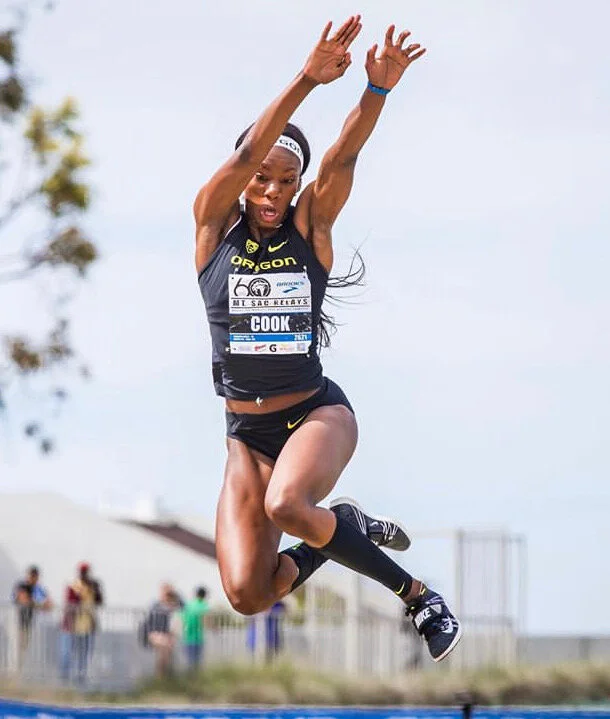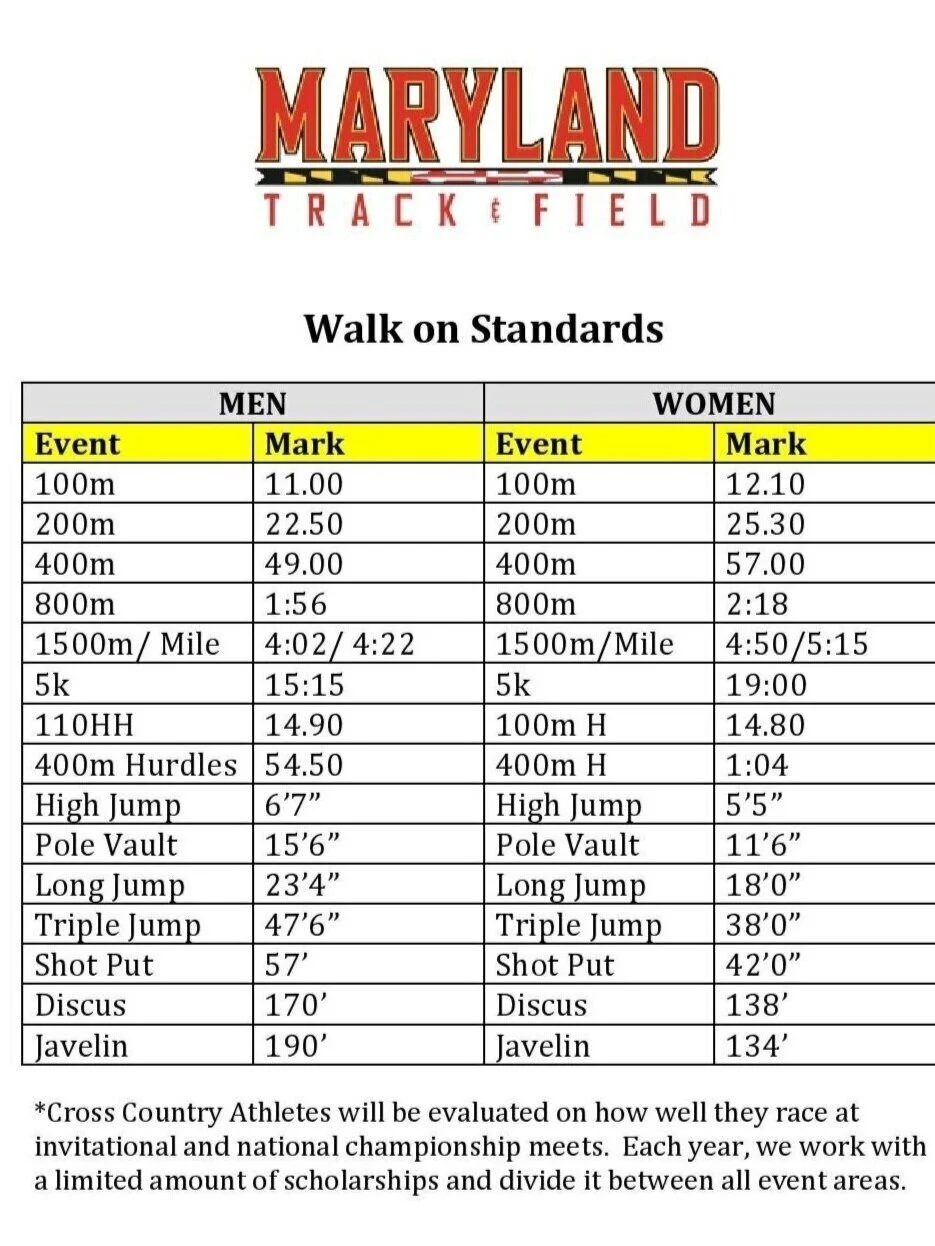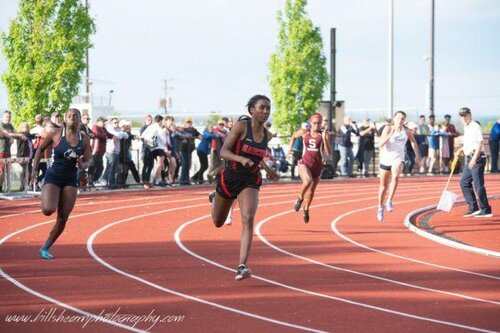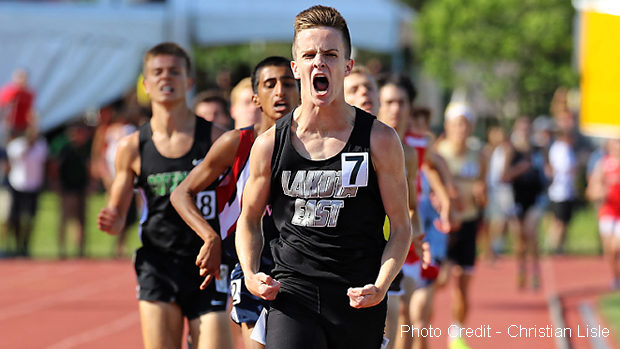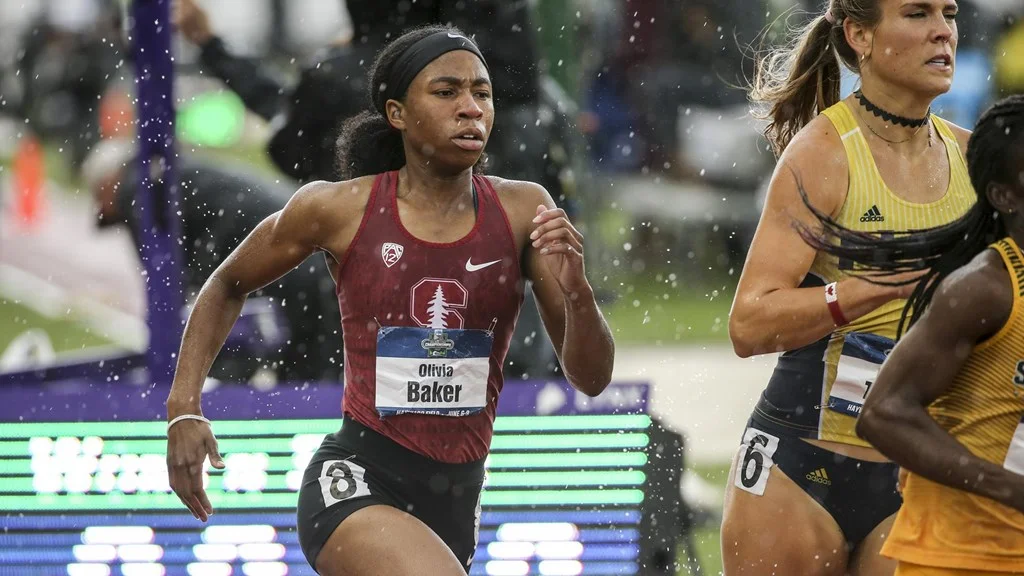
Oregon Ducks 2020 Track and Field Recruiting Class
The University of Oregon officially announced its 2020 track and field recruiting class.
"I think it's a recruiting class that is balanced and addresses some of our needs in our program," Oregon coach Robert Johnson said.
Here's a brief look at some of the newcomers:
Keep in mind, none of these athletes had a senior season outdoors due to the coronavirus, so all personal-record times and marks and titles were earned as juniors or before.
Micah Williams, sprints
There has never been anyone faster in the state of Oregon than the standout from Portland's Benson HS. He is the prep record-holder in the 100 meters (10.21 seconds) and 200 (21.03) and in 2019 he had the second-fastest 100 time nationally. The two-time Gatorade boy's track and field runner of the year also won the 2019 New Balance Nationals indoor title in the 60 with a time of 6.60.
Evan Holland, distances
Between his sophomore season in track and field and his senior season of cross country last fall, Holland won six Class 5A state titles for Ashland — two in cross country (2018 and 2019) and outdoor sweeps of the 1,500-3,000 in 2018 and 2019. The two-time Gatorade Oregon boy's cross country runner of the year, placed sixth at the 2019 Nike Cross Nationals meet. His PR of 8:13.10 in the 3,000 is fourth-fastest all-time in Oregon, and his PR of 3:50.42 in the 1,500 is eighth-fastest.
Maddy Elmore, distances
The Eugene native out of South Eugene won the 6A title in the 1,500 last year in a PR of 4:27.13, making her the ninth-fastest performer in Oregon history and the fourth-fastest since 1985. Elmore is a six-time Southwest Conference champion with five titles on the track and one in cross country (2019).
Colleen Uzoekwe, sprints
As a junior in 2019, Uzoekwe won 6A state titles for Portland's Westview HS in the 100, 200 and long jump, and was the runner-up in the high jump. Her PR of 11.86 in the 100 ties her for fourth all-time in the state.
Riley Traeger, throws
While a junior at Silverton in 2019, she was the Class 5A state title in the javelin and then followed with a win at the 2019 USATF National Junior Olympics.
Taylor Chocek, multis
Chocek qualified for four events at the state meet in 2019 for South Eugene and scored in three as the Axe went on to win the team title. She followed with a seventh-place finish in the heptathlon at the USATF National Junior Olympics.
Jadyn Mays, sprints-jumps
A dominant athlete from Arizona, Mays won 11 state championships in three years, including titles in the 100, 200 and 4x100 all three years. She also won long jumps titles in 2017 and 2018. Her PR of 11.56 in the 100 is fourth all-time in Arizona. Also has a PR of 23.84 in the 200 and 19 feet, 5 inches in the long jump.
Jett Kinder, multis
The decathlete from Tennessee won a silver medal at the 2019 Pan American U20 Championships. Set his PR of 7,077 points during his state-meet championship performance as a junior in 2019.
Nicole Louw, distances
She was the 2019 South African U20 champ in the 1,500 and runner-up in the 800. Has PRs of 2:07.64 in the 800, 4:21.44 in the 1,500 and 9:33.07 in the 3,000.
Alexa Webster, hurdles
The 2019 USATF National Junior Olympics champion in the 400 hurdles has a PR of 59.42 that would already put her in the UO top 10.
Maryland Track and Field Walk-On Standards
College Track and Field Recruiting
Maryland Track and Field Walk On Standards
See below the marks you will need hit to garner a walk-on spot at the University of Maryland.
University of Central Florida Track and Field Recruiting Standards
UCF Track and Field Scholarship and Walk-On Standards
The University of Central Florida only has a women’s program. They compete in the American Athletic Conference. They are strongest in the short sprints and hurdles.
Event: Scholarship: Walk-on:
100: 11.60 11.80
200: 24.00 24.50
400: 54.90 56.00
800: 2:12.0 2:15.0
1600: 4:59.0 5:10.0
3200: 10:45.0 11:15.0
100h: 13.90 14.20
400h(300h): 1:00.00 1:02.50
2000m Steeple: 7:10.0 7:30.0
Long Jump: 19’06”(5.95m) 18’06”(5.65m)
Triple Jump: 40’00”(12.20m) 38’6”(11.75m)
High Jump: 5’08”(1.75m) 5’04”(1.60m)
Pole Vault: 12’0”(3.65m) 11’0”(3.35m)
Shot Put: 45’00”(13.71m) 42’00”(12.80m)
Discus: 150’00”(45.72m) 140’00”(42.60m)
Hammer: 164’00”(50.00m) 147’06”(45.00m)
Javelin: 150’00”(45.72m) 130’00”(40.00m)
Official and Unofficial Recruiting Visits
College Track and Field Recruiting
What is the difference between an official visit and an unofficial visit?
Any visit to a college campus by a college-bound student-athlete or his or her parents paid for by the college is an official visit. Visits paid for by college-bound student-athletes or their parents are unofficial visits.
During an official visit the college can pay for transportation to and from the college for the prospect, lodging and three meals per day for both the prospect and the parent or guardian, as well as reasonable entertainment expenses including three tickets to a home sports event.
The only expenses a college-bound student-athlete may receive from a college during an unofficial visit are three tickets to a home sports event.
Track and Field Recruiting From the Eyes of an Elite HS Runner
Interview with Cory Mull
Senior, Talitha Diggs finished her junior season ranked in the top 10 nationally in the 400m (52.82 seconds) and top 50 in the 200m (23.88). As a result, basically every school in the country started recruiting her. To date, her top six choices are Texas, South Carolina, LSU, Florida, Stanford and the University of Southern California. Here are a few things Diggs is keeping in mind with each visit.
1.COACHING PHILOSOPHY: "When I look for a coach, I'm looking for a family-oriented program and a supportive coach who wants you to come to the university but also really wants to train you as an athlete. They know what you're capable of doing. I need tough love, too."
2. PRIOR SUCCESS: "I'm looking at the success they've had in the 200m and 400m and the 100m. I'm looking to see how I can add to that, to make it stronger. That's an important thing. With (Texas') Coach Floreal, for instance, he's had a lot of coaching experience in the areas I run.”
3. CULTURE: "I'd like to work with a mentor. I like tough love. I think it makes you stronger. But while I want to be a great track athlete, I want to be a better person. I want an environment that gives me all those things."
4. TEAMMATES: "It's definitely an important factor to me. Being able to have teammates who can push me, mentally just be able to push me. They build the environment of the school, so what each teammate brings to that university is going to matter for me."
5. DEPTH CHART: Based on signings over the past three seasons, here are sprinters who have signedwith each program on Diggs' final list of six teams.
Track & Field Recruiting – What Should I Be Doing This Summer?
Track and Field Recruiting
The NCAA currently reports that over 1.5 million boys and girls participate in high school track & field and cross country. Of those 1.5 million participants, only 85,000-90,000 will compete in college, or approximately 4-7% depending upon event and gender
As a result, it is imperative that you devise a plan of action early on in your high school career. You have worked too hard and sacrificed far too much to idly wait for the process to begin. Take control of your destiny in the same manner you have your academic and athletic endeavors. The recruiting process will require the same such commitment from you.
Below are factors to considering when searching for the college of your dreams.
Going To Be A Sophomore
With the new NCAA Recruiting Rules your recruiting process will begin in less than a year. As a result, it is imperative that you devise a plan of action now. Below are three suggestions for you to consider during your sophomore year of high school to optimize your college recruitment experience:
- Create a list of schools
- Send an introductory email
- Communicate effectively
For more information click here - SOPH YEAR
Going To Be A Junior
Your junior year is quickly approaching and it is time to start seriously considering where you want to continue your academic and athletic pursuits. Do not be passive -- start reaching out to college coaches now. Be proactive in your outreach and email every program that you are interested in, regardless of the perceived reach. Be your own greatest advocate and take charge of your future.
- Cast A Wide Net
- Fill Out Online Recruiting Questionnaires
- Contact College Coaches
- Take The ACT / SAT
- Utilize Unofficial Visits
For more informaiton click here - Jr Year
Going To Be A Senior
If you are not being recruited at all yet or not hearing from the programs you are most interested in is time to reevaluate your college search process. There is still time plenty of time to devise a new strategy and create a new outreach plan.
- Try, try again – and, then move on. Re-contact everyone.
- Reach out to all the schools that have reached out to you
- Expand your search
- Try different means of outreach
- Enlist the Help of your High School Coach
- Enlist the help of a third-party
For more information click here - Sr Year
If you are not getting your desired results and need help - enlist the services of Fast Track Recruiting. We have produced the desired results for numerous families.
Best NCAA Division I Colleges - Fast Track Recruiting 2019 Cross Country Power Rankings
Fast Track Recruiting Cross Country Power Rankings looked at over 300 NCAA Division 1 College Cross Country programs. Our best program list is based on the school’s academic rankings and Regional and National Cross Country Rankings.
Here are the programs that are representing the best results in and out of the classroom using our criteria.
2019 Men’s XC Power Rankings:
1. Stanford
2. Princeton
3. Notre Dame
4. Michigan
5. UCLA
6. Wisconsin
7. UVA
8. Washington
9. BYU
10. Purdue
Honorable Mention:
Texas, Georgetown, Penn, Army, Dartmouth, Brown, Penn State
2019 Women’s XC Power Rankings:
1. Stanford
2. Princeton
3. Columbia
4. Michigan
5. Notre Dame
6. Dartmouth
7. Villanova
8. Wisconsin
9. Georgia Tech
10. Washington
Honorable Mention:
BYU, Penn State, Yale, Duke, Wake Forest, Penn, Illinois, Northwestern, Cornell
Stanford Track and Field Recruiting Standards
Want to compete for the Stanford Cardinal Track and Field Program? Get ready to work hard! Not only will you have to have close to a 4.0 GPA and test scores in the 30 ACT / 1400 SAT range, you are also going to need off the chart performance marks as well, regardless of your event. There is no easy way onto this team.
The Stanford coaching staff purposefully does not post recruiting standards for their program. According to their coaches there are too many factors to consider.
I went through their roster to identify what marks their current athletes achieved in High School. The performances listed below will give you an idea of just how competitive you will need to be in each event:
EVENT MEN WOMEN
100m 10.50 11.60
200m 21.40 23.50
400m 47.75 53.90
800m 1:51 2:05
1600m 4:06 4:42
3200m 8:58 10:20
110HH 13.70 13.70
300IH 37.00 59.50 (400IH)
HJ 6’ 10” 5’ 8”
LJ 23 ‘ 6” 19’ 6”
TJ 49’ 41’
PV good luck 13’ 6”
SP 60’ 47’
Discus 190’ 160’
Javelin 210’ 165’
Hammer 200’ 160’
How I Made My College Decision - Gen Hirata
The college decision is a tough one, but I feel like the choice was clear for me. I have been pole vaulting for a little over two years and knew since day one that I would want to compete in the sport in college. I searched for the best schools with the best pole vaulting programs in the nation and contacted their coaches. I researched and visited several schools before I found my top pick, the University of South Dakota. When I talked to Coach Derek Miles on the phone for the first time, I knew South Dakota would be a top contender for me. After a few more phone calls with other coaches I narrowed down my choices and visited my top four schools, Virginia Tech, the University of Arkansas, the University of Virginia, and the University of South Dakota. Although all of these schools had outstanding programs, both athletically and academically, I decided that South Dakota would be the right fit for me. After meeting all of the pole vaulters at South Dakota and speaking with all of the track and field staff, I knew South Dakota would be my top choice. Coach Miles ensured me that he would do his absolute best to make me the best pole vaulter I could be and I genuinely believed him. His coaching style is similar to the way my current club coach, Val Osipenko, teaches which was something that was very important to me in my decision making process. Coach Val and coach Miles are both passionate about what they do and thoroughly enjoy coaching others to success. In the end, I knew for certain that the University of South Dakota would be my new home for the next few years.
Why To Consider a Distance-Oriented Track Program
NORTHERN ARIZONA XC - NCAA I CHAMPIONS - 2016, 2017, 2018
It requires only a brief glance at the NCAA results to realize that many of the nation’s top cross country teams are programs that have made a deliberate decision to focus their resources on distance running. At the Women’s NCAA I Cross Country Championships last weekend, Colorado and New Mexico finished 1st and 2nd - both team are distance-oriented programs. On the men’s side, Northern Arizona University, Portland and Colorado finished 1st, 3rd and 4th respectively further confirming this trend. Look no further than upstarts Furman University and Bradley University as impactful programs on the national level.
To learn more about the advantages of running for such a program I spoke with current Boston Athletic Association (BAA) High Performance Coach Ricardo Santos.
An athlete at Iona College, Santos was an NCAA All-American. As a coach, his athletes accrued a long list of accomplishments, including NCAA Cross Country, Indoor, and Outdoor Track Championships, All-American honors, Metro Atlantic Athletic Conference championships, and eight top-10 NCAA team finishes in cross-country.
Santos stated, “Throughout the college recruiting process, numerous high-level distance runners are faced with the decision between looking at schools with complete track and field programs versus those that focus on cross country and distance events on the track. Having been at a distance-only school as a student-athlete and coach, I may be a little biased, but there are many advantages to competing for a distance-oriented program.
I asked Coach Santos what factor he considered to be the most positively impactful. In his opinion, he thought that “The most important factor is individualism. Coaches are able to focus more on individuals as the number of overall athletes on the team tends to be smaller than those of a full program. He further stated that “This can allow for a more natural progression in an athlete’s career and not rush them into higher mileage or inappropriate intensity level of training before the athlete is ready, thus, reducing the risk of injury or burn- out.
Coach Santos went on to say, “Another key factor is not over racing. Many of the full programs during the track seasons are looking to win meets - this may mean that an athlete will have to compete in multiple races to score points for the team. Potentially, this can lead to over racing. With distance only programs there is a less chance of over racing as most meets will focus on individual performance as opposed to team finish. The primary focus is on the post-season and individual achievement on the track.
Santos concluded, “In the end, it really depends on what the prospective student-athlete is looking for. There are many factors to consider when deciding between a distance only program and a more tradition full track and field program. However, in my opinion, the distance only program serves as a great benefit for someone looking to develop at a more natural progression.
Iona College Women’s XC

